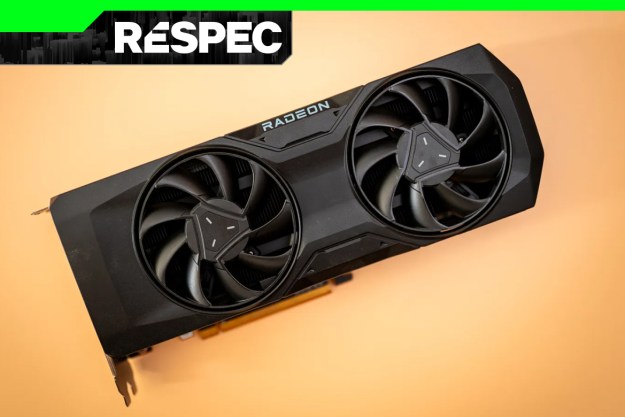AMD released its RX 6000 graphics cards a few months ago, but next-generation cards based on the new RDNA 3 architecture are, of course, in the works. Leaker KittyYuko (via Wccftech), who had a successful streak with Ampere and Big Navi leaks, shared some information about the upcoming Navi 33 GPU.
The cryptic tweak says that Navi 33 equals Navi 21, plus a next-gen IP core. That points to an RDNA 3 core with specs equal to the current Navi 21 GPU.
Navi 33 (?) = Navi 21 + Next Gen IP Core
— Yuko Yoshida (@KittyYYuko) May 2, 2021
Variants of Navi 21 are inside the RX 6900 XT, 6800 XT, and 6800. The top-end chip inside the 6900 XT features 80 compute units, 80 RT cores, and 5,120 shaders, and according to KittyYuko, the next-gen Navi 33 GPU will feature the same specs. A patent from last year, however, shows that AMD may be using a chiplet design inspired by Ryzen processors, which would put two GPU cores next to each other for a total of 160 compute units and 10,240 shaders.
In general performance, AMD has seen gen-on-gen improvements of about 50% from GCN to RDNA, and from RDNA to RDNA 2, so it would make sense to see twice the compute units, RT cores, and shaders in AMD’s next-gen cards.
The improvements could be much greater, though. Next-gen RX graphics cards are rumored to be manufactured on TSMC’s 5nm process node, and they could provide as much as a 2.5x uplift over the current-gen design. AMD hasn’t formerly unveiled RDNA 3, but AMD executive vice president Rick Bergman and CEO Dr. Lisa Su have both confirmed that the company is hard at work on it. Bergman stressed the performance-per-watt improvement RDNA 3 will bring, saying it’s “a big focus” for AMD.
Originally, we expected RDNA 3 graphics cards in late 2021 or early 2022. However, Twitter user @Kepler_L2 suggests the cards won’t come until later in 2022. It could take even longer depending on the 5nm supply available to AMD. The semiconductor shortage is still gripping the world, and executives from companies like Intel suggest that it will take a few years for supply chains to fully recover.
Editors' Recommendations
- AMD’s graphics card sales just took a nosedive
- AMD Zen 5: Everything we know about AMD’s next-gen CPUs
- The sad reality of AMD’s next-gen GPUs comes into view
- AMD’s next version of FSR promises better visuals and support for Xbox
- Nice try, Intel, but AMD 3D V-Cache chips still win




